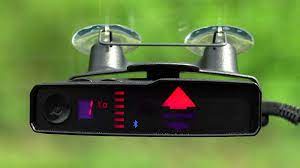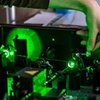When it comes to radar detectors, few names evoke as much trust and reliability as Valentine. In this journey through time, we'll explore the fascinating evolution of Valentine radar detectors, tracing their roots, and uncovering the innovative features that have made them a staple for drivers seeking top-notch radar detection.
A Glimpse into the Past
Valentine's foray into the world of radar detectors began decades ago, in an era when radar technology was still finding its footing. The initial models were basic, offering a simple yet effective approach to detecting radar signals. Back then, the focus was on providing drivers with a tool to enhance their awareness and promote safer driving habits.
The Pioneering Features
Pop Mode Detection
As radar technology advanced, so did Valentine's commitment to staying ahead of the curve. The introduction of Pop mode detection marked a significant leap forward. This feature allowed Valentine radar detectors to pick up brief radar bursts, providing users with enhanced sensitivity and quicker response times.
Ka-Band Sensitivity
With law enforcement agencies increasingly using Ka-band radar, Valentine responded by incorporating high sensitivity to this frequency. This proactive approach ensured that drivers were well-equipped to detect the latest radar technologies employed by authorities.
The V1: A Game-Changer
In the 1990s, Valentine unveiled the V1, a radar detector that would redefine expectations. The V1 introduced the revolutionary concept of directional arrows, allowing drivers to pinpoint the source of radar signals. This groundbreaking feature provided a new level of situational awareness, empowering drivers to react strategically to potential threats.
The Digital Age Upgrades
As we entered the digital age, Valentine radar detectors embraced technological advancements to maintain their edge in the market.
Digital Signal Processing
Valentine implemented Digital Signal Processing (DSP) to enhance the accuracy of radar signal analysis. This upgrade significantly reduced false alerts, ensuring that drivers received warnings only when it mattered most.
Bluetooth Connectivity
With the integration of Bluetooth connectivity, Valentine radar detectors entered the realm of smart technology. Users could now pair their detectors with smartphones, unlocking features like real-time updates and custom settings through dedicated apps.
The Present: V1 Gen2
In recent years, Valentine has continued to innovate, culminating in the release of the V1 Gen2. This latest iteration combines the classic reliability of Valentine radar detectors with modern advancements, such as improved range, enhanced filtering capabilities, and a sleeker design.
Looking Forward
As technology continues to evolve, so will Valentine radar detectors. The future promises even more intelligent features, improved connectivity, and heightened accuracy, solidifying their position as a trusted companion for drivers navigating the complexities of modern roadways.
Conclusion
In the grand tapestry of radar detection history, Valentine has woven a narrative of constant innovation and adaptation. From the early days of basic radar detection to the cutting-edge features of the V1 Gen2, each chapter tells a story of a brand dedicated to keeping drivers safe on the road. As we reflect on the historical journey, one thing remains clear – Valentine radar detectors have not just kept up with the times; they've set the standard.
Frequently Asked Questions (FAQs)
1. Are Valentine radar detectors legal to use?
Yes, Valentine radar detectors are legal for use in most jurisdictions. However, it's crucial to be aware of and comply with local laws regarding radar detectors.
2. How often should I update my Valentine radar detector?
It's recommended to regularly check for firmware updates on the official Valentine website to ensure your detector has the latest features and improvements.
3. Can Valentine radar detectors detect all types of radar signals?
Valentine radar detectors are designed to detect a wide range of radar signals, including X, K, and Ka bands, providing comprehensive protection.
4. What is the range of the V1 Gen2 radar detector?
The V1 Gen2 boasts an impressive range, allowing drivers to receive timely warnings and react accordingly. However, factors such as terrain and weather conditions can influence the actual range.
5. How do I interpret the directional arrows on the Valentine V1 Gen2?
The directional arrows on the V1 Gen2 indicate the source of the radar signal. A front arrow signifies a signal coming from the front, while a rear arrow indicates a signal from behind. Arrows on both sides suggest signals from both directions.


No comments yet